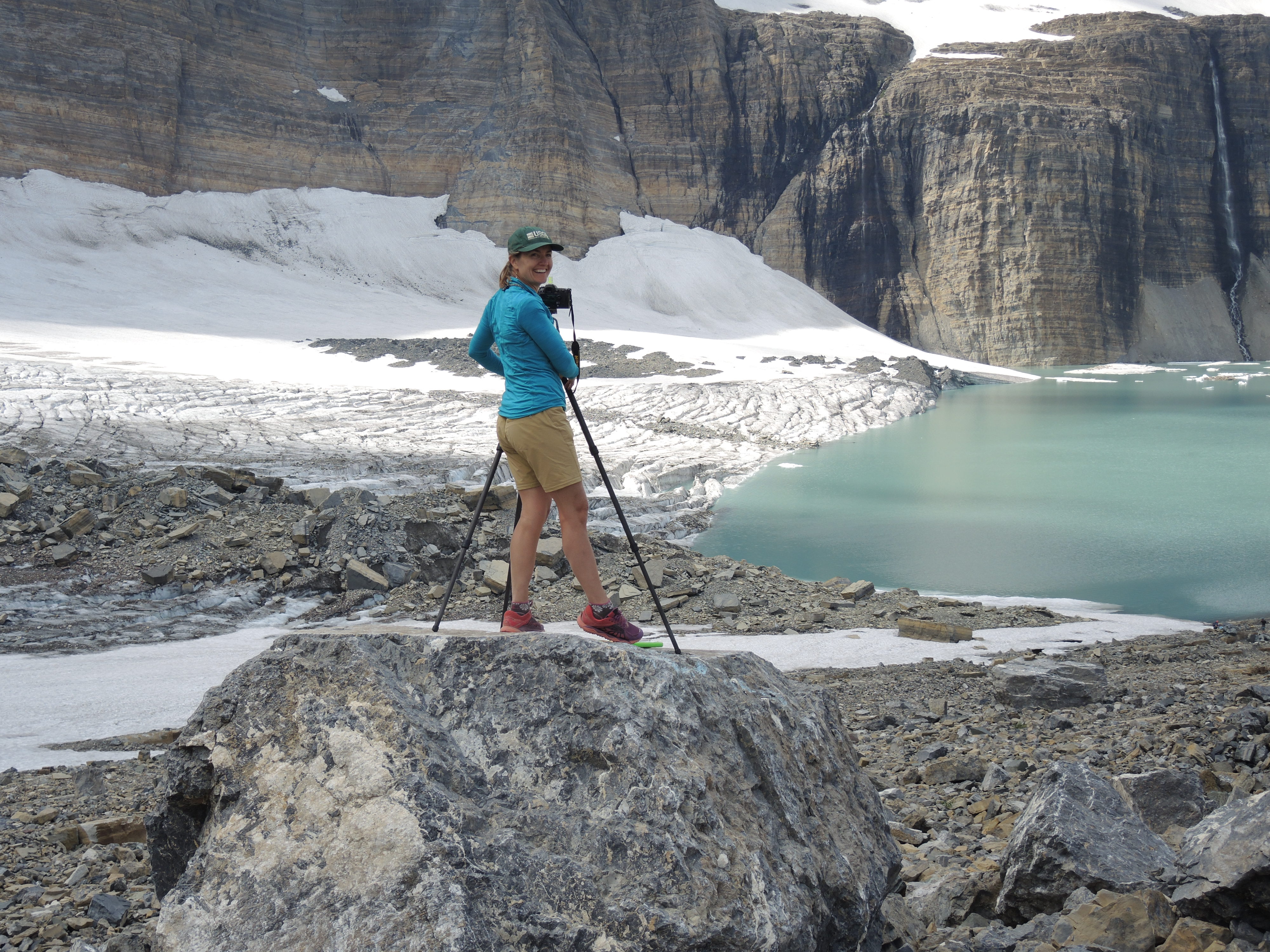Beyond Doom and Gloom: Science Communication at Glacier National Park
 When it comes to communication about climate change, there’s a lot of complexity to consider, said USGS scientist Dan Fagre.
When it comes to communication about climate change, there’s a lot of complexity to consider, said USGS scientist Dan Fagre.
“The problem is that to really understand it, people need to understand the process,” he explained. “It’s sort of analogous to a lot of ideas out there about nutrition: people glom onto an idea but they don’t really go a little deeper to find out what the underpinnings of that really are.”
Most scientists don’t like to do outreach and communication, Fagre said, which can be a big disadvantage when trying to interpret their work on a public stage. Fagre said he recently saw a report that scientists currently have the lowest regard from the public of any time in the last 100 years.
“In the 1890's, people wanted to be scientists,” he said. “It was a really desirable, romantic, exploration-tinged kind of career. But now scientists are often viewed as just bringing bad news, or people are suspicious because they don’t really know what they do.”
Public engagement is an important part of the process for Fagre. He likes to emphasize the positive aspects of conducting science in the era of extreme climate change.
“Sometimes it’s when things are not going well that you learn how things work,” he said. “One of the silver linings is that our knowledge of mountain ecosystems has skyrocketed in the last 20 years. Because mountains are now regarded as the water towers of the world, it’s where so much of our moisture is stored and released, that now, at the time when we realize they’re in danger, we understand them better than ever.”
The number of mountain research initiatives that have sprung up in response to the newly recognized pressures on mountain ecosystems are an exciting prospect for Fagre.
“Science has been exploding in general,” he said. “Mountains are getting their due as a focus. About 1/5 of the land surface of the world is covered by mountains. They’ve been underappreciated and understudied until now.”
As climate change continues to affect precipitation and available freshwater around the planet, Fagre said it’s the extremes that scientists and policymakers need to pay attention to.
“Even if the total amount of precipitation goes up, its distribution is the problem,” he said. “We keep thinking in averages, and averages are really not very relevant. What's relevant are the extremes.”
Some places will experience increasing drought, while others will receive excess precipitation. “The average amount is a nice amount of precipitation for growing agriculture, but it’s not stable. You mask a lot of the problems by just saying ‘Precipitation in the United States is stable or will go up’. But for the farmer that isn’t getting rain or is getting too much, those are the big issues.”
Fagre pointed out a local example: ski areas, for example, have to have snow every year. “Not a ton one year and zero the next year,” he said. “It’s hard to build a business model around that. So rather than looking at the average snowfall, you have to look at the extremes.”
This can mean restructuring scientific research, Fagre explained. In one of his research projects, he looked at the increase in number of days in the summer that were over 90 degrees Fahrenheit.
‘That increase was much faster than the increase in the average,” he said. Similarly, he looked at the decrease in cold days. “We had fewer days below 32, but much more days below 0. So we’re losing our really cold weather.”
The impacts spiral from there: it means more insects survive the winter, which means more beetle outbreaks, and long-ranging impacts on the wider ecosystem.
“People think, ‘I’ll just crank up the AC.’ But you may not have the AC to crank up because the extremes may cause one place to be cooler than normal, and another place to just scorch. It only takes one of those events a decade to be a real big impact on people.”
There have always been large disturbance events in natural ecosystems, but in the past, these types of changes usually allowed enough time for flora and fauna to recover.
“The concern is that they just won’t ever get a chance to recover, because they just get whacked over and over,” Fagre said. With extreme and frequent enough disturbances, such as wildfires, a system may permanently change into something entirely new, better adapted at surviving those harsh changes.
In this scenario, large forested areas of Glacier National Park could become dominated by shrubs in the future, Fagre said.
“We try to emphasize there will be some profound changes in Glacier Park, but it doesn’t mean that it implodes,” Fagre said. “It may not be the way we want it to be, but it’s going to survive much worse than humans. I think that’s an example where we have to temper the fact that it is profound and should get our rapt attention, but by the same token, it shouldn’t be the situation that people give up hope.”
By Jackie Bussjaeger
This is Montana Editor
Photo: USGS scientist Lisa McKeon photographs Grinnell Glacier in Glacier National Park. Photo courtesy of Dan Fagre.
